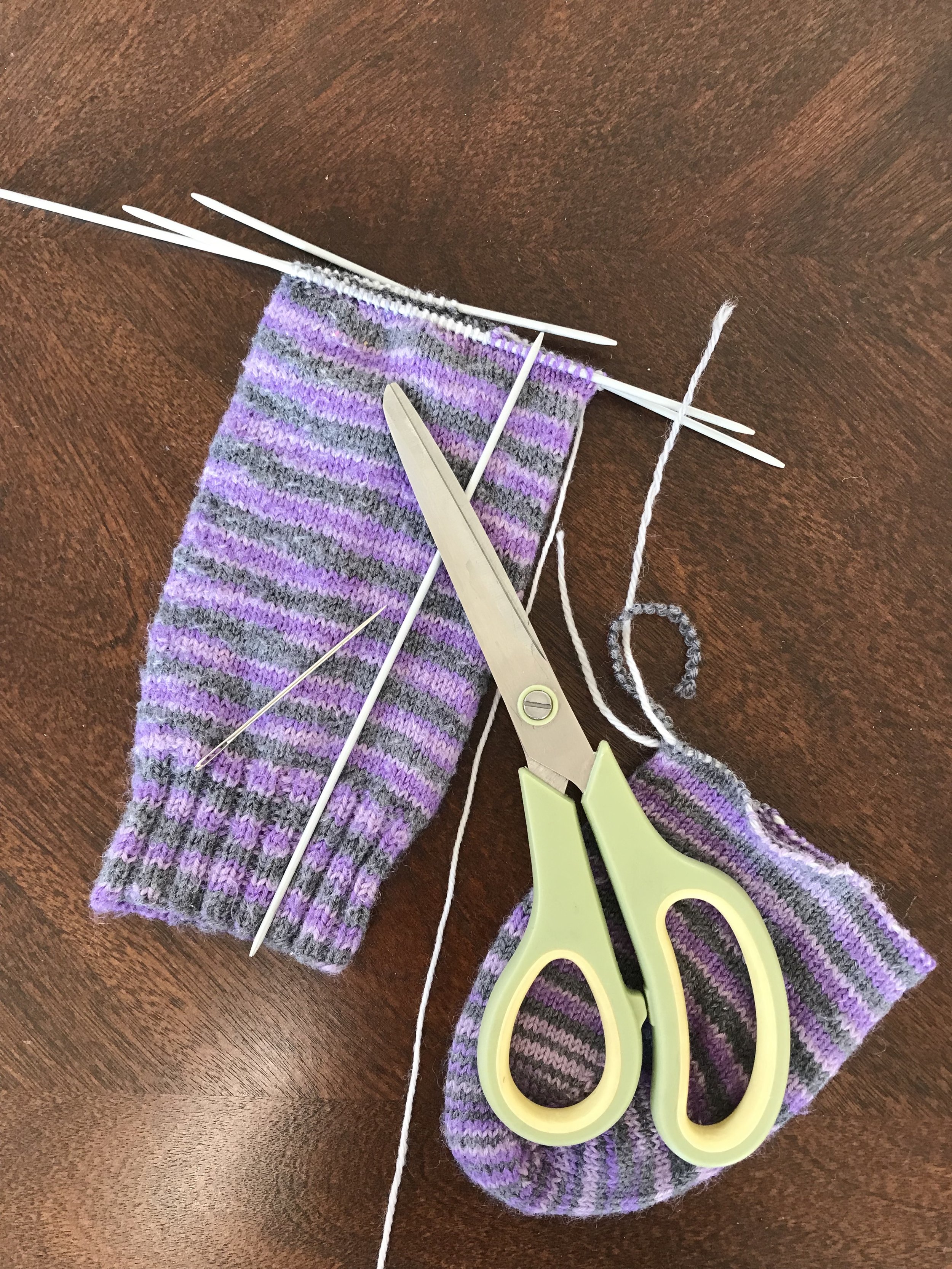The Art of Repairing Socks—and Drafts
I have here one pair of hand-knitted socks with badly worn heels, a pair of scissors, 4 DPNs (double pointed knitting needles to the uninitiated), repair yarn, and a darning needle.
On my computer sits one manuscript draft full of holes. It also has a few patchy sections. They are left over from what was once a proposal. I wrote them into the draft because I needed something there to work with. They were placeholders. I knew that when I put them in, but now I can’t always recognize them. I certainly can’t tell which of those “notes to self” might be worth developing and which of them just need to be cut. The draft has long since outgrown its proposal form but those thin rows remain embedded. The problem is, they’re worn by overuse and redundancy, and it feels as if I am making the reader walk through my work wearing, yes, socks with worn heels. You know what that feels like.
At a recent writing group meeting I placed the final chapters of my draft under the collective microscope. I came away feeling encouraged and overwhelmed at once, incapable of seeing what I ought to do next.
When that happens I sometimes turn to knitting. Something about the repetitive task of adding stitches, one at a time, row by row, often sustains me during the writing of drafts. Somehow this time instead of starting something new I picked up that old pair of socks. I cut off the worn out heel and the couple of inches of knitting that housed it. I pulled out loose ends of yarn. I found the “live” rows of stitches to work with. I saved one half on scrap yarn, as one does, and put the other on those DPNs. Now I can knit a new heel and join it to the rest of the foot.
And I can turn my mind to the next round of cutting and rebuilding that the draft requires.



